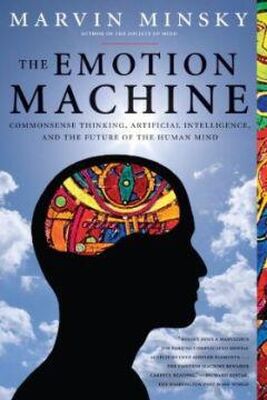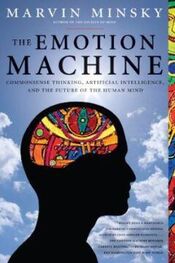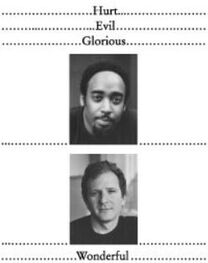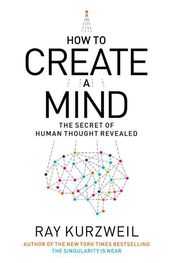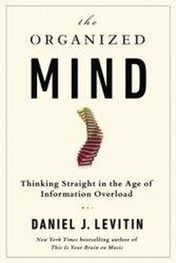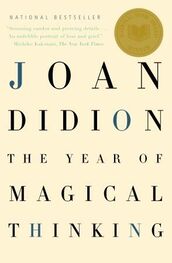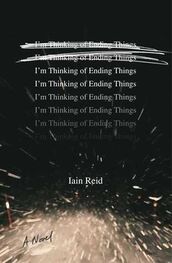Kay Redfield Jamison, “Manic-Depressive Illness and Creativity,” Sci. Amer., Feb. 1995 V. 272 No. 2 Pp. 62-67
Most animals simply do not have the high-level resources that people have, and this makes it risky to apply to ourselves what we learn from laboratory animals.
“Duplication describes a remedy for this.”
Thus, to ascend from the top of Kilimanjaro to the summit of, say, Mt. Everest, you would have to climb down and then up again.
See my essay on Jokes, at web.media.mit.edu/~minsky/papers/jokes.cognitive.txt
See the extensive discussion in William James’ text, “The Varieties of Religious Experience.”
Sigmund Freud, in A General Introduction to Psychoanalysis , 1920, p. 259.
For more details of this episode, see §4.5 of SoM.
www.srichinmoy.org/html/library/questions_answers/consciousness_qa.htm
Fodor, J. A., Can there be a science of mind? Times Literary Supplement . July 3, 1992, pp5-7.
Chapter 2 of Conversations with Neil’s Brain, REF
In comp.ai.philosophy, 14 Dec. 1994
An Enquiry Concerning Human Understanding, 1748
In sci.psychology.consciousness, 15 Jun 96.
There are important exceptions to this. It would seem that experts like J.S. Bach developed ways to accomplish more multiple, yet still similar goals in parallel. However, as their skills improve, most such experts become less and less able to tell the rest of us how they do them.
William James discussed this extensively. See: http://psychclassics.yorku.ca/James/jimmy11.htm. Several other more modern ideas about this are developed in Daniel Dennett’s 1991 book, Consciousness Explained.
So, despite a popular intuition, research on parallel processing has shown that such systems are frequently prone to end up accomplishing less for the same amount of computational power Nevertheless, if that cost can be borne, then the final result may come sooner!
See Parallel Distributed Processing, Rumelhart, D., J. McClelland et al., MIT Press, Cambridge, MA: 1986. See also my discussion of ‘opacity’ in http://web.media.mit.edu/~minsky/papers/SymbolicVs.Connectionist.html. For some limitations of the most popular forms of neural networks, see [Perceptrons.][Ref.]
See Jeffrey Siskind, publication about…
Chapter §8 will propose more details about how our memory structures are organized to so swiftly deliver such information. Basically, when a problem arises, some processes may start to solve it before other processes formulate questions about it.
See §25.4 of The Society of Mind, p257.
” —psyche-b@listserv.uh.edu, 29 Sep 1997.
In Outlines of Psychology , 1897.
This idea is explained in more detail at http://web.media.mit.edu/~minsky/papers/MatterMindModels.html.
In a discussion on the newsgroup comp.ai.philosophy, 7 Feb 1992.
Daniel Dennett, Consciousness Explained. [ref.]
[Ref to Metaphor, Lakoff, etc.]
I don’t think modern programming, on the whole, has reached this stage. Indeed, I did once suggest, very long ago, that a Cartesian Theater concept be a good model of programming. Old design paper]
http://www.imprint.co.uk/online/new1.html
Dennett, Daniel C and Kinsbourne, Marcel, (1992) Time and the Observer. Behavioral and Brain Sciences 15(2): pp183-247. http://cogprints.ecs.soton.ac.uk/archive/00000264/
SoM 25.04 Continuity.
http://www.u.arizona.edu/~chalmers/papers/facing.html.
Ref. to Penrose’s book.
This example is from Frederik Pohl’s prescient short story Day Million in his anthology, Day Million, Ballantine Books 1970 ISBN: 0330236067
More details about construction planning were developed by Scott Fahlman in his 1973 paper at ftp://publications.ai.mit.edu/ai-publications/pdf/AITR-283.pdf
In Principles of Psychology , p359
According to Tinbergen, when an animal can’t make a decision, this often results in dropping both alternatives and doing something that seem to be quite irrelevant. However, these “displacement activities” seem to be fixed, so they do not suggest that those animals have thoughtful ways to deal with such conflicts.
In The Natural History Of Religion, 1757. http://www.soci.niu.edu/~phildept/Dye/NaturalHistory.html
Some early steps in that project are described in ftp://publications.ai.mit.edu/ai-publications/pdf/AIM-200.pdf.
See http://web.media.mit.edu/~minsky/papers/PR1971.html
In fact, that darker horizontal streak is not the lower edge, but is part of the surface next to that edge, slightly shadowed because that edge is worn-down.
V.S. Ramachandran, Science, v305 no.5685, 6 August 2004.
in www.richardgregory.org/papers/brainy_mind/brainy-mind.htm. See also, www.physiol.m.u-tokyo.ac.jp/resear/resear.html
This program was based on ideas of Yoshiaki Shirai (and Manuel Blum). See ftp://publications.ai.mit.edu/ai-publications/pdf/AIM-263.pdf. However, I should add that Builder had almost no competence for any but neat geometrical scenes—and, so far as I know, there still are no ‘general-purpose vision machines” that can, for example, look around a room and recognize everyday objects therein. I suspect that this is mainly because they lack enough knowledge about real-world objects; we’ll discuss this more in Chapter 6.
See papers by Adolfo Guzman and David Waltz at ftp://publications.ai.mit.edu/ai-publications/pdf/AIM-139.pdfand
ftp://publications.ai.mit.edu/ai-publications/pdf/AITR-271.pdf
See Zenon Pylyshyn, http://ruccs.rutgers.edu/faculty/ZPbbs98.html. [Broken Link] The octagon example is from Kanizsa, G. (1985). Seeing and Thinking. Acta Psychologica, 59 , 23-33.
In this kind of diagram, each object is represented by a network that describes relationships between its parts. Then each part, in turn, is further described in terms of relationships between its parts, etc.,—until those sub-descriptions descend to a level at which each one because a simple list of properties, such as an object’s color, size, and shape. For more details, see §§Frames, Quillian’s thesis in Semantic Information Processing , and Patrick Winston’s book, The Psychology of Computer Vision.
Читать дальше